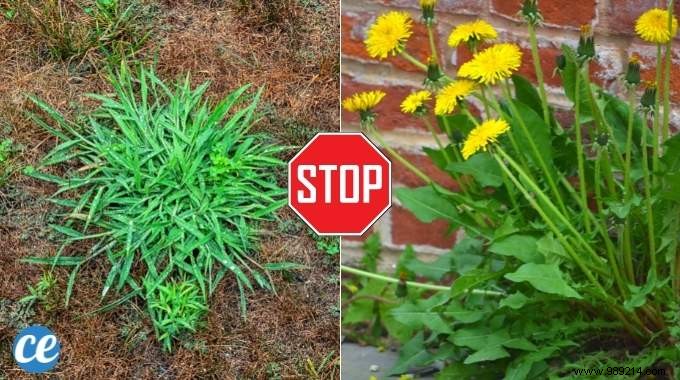
A self-respecting beautiful garden is bound to be a garden weed free.
Easier said than done you might say!
Because weeds grow everywhere and quickly become invasive.
You who work so hard to have a clean lawn, you know what I'm talking about.
So to better fight these pesky intruders, I've decided to list the most dreadful weeds for you.
Each weed is pictured for easy recognition.
And of course, I also tell you how to get rid of it naturally!
Discover the 15 worst weeds in the garden in photos and the solutions to get rid of them. Watch:
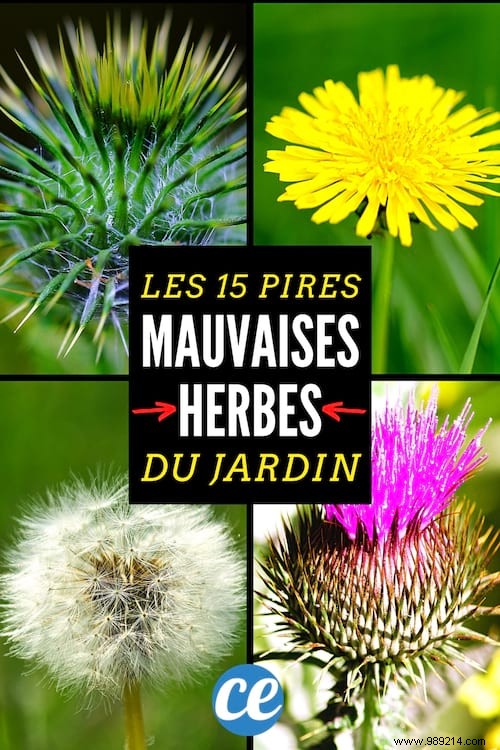
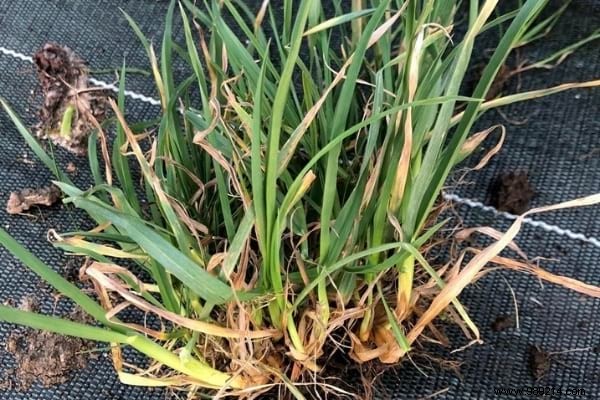
When we talk about weeds, we obviously think of one of the worst intruders ever, I named quackgrass .
It creeps in everywhere (pathways, lawns, flagstones...), grows super fast and is not easy to remove.
And if you leave any rhizome (underground stems) alive, you can be sure to see this perennial grass resurface!
Already, be aware that quackgrass germinates from March to October. So be vigilant during these times.
To get rid of it, there are not 36 solutions.
Prefer to take a spade fork rather than a rototiller or a hoe.
This frees up the rhizomes along their entire length.
Thoroughly dig the infested areas with removing the roots.
Repeat the operation at monthly intervals.
Finally, cover the non-infested areas with a good natural mulch.

The egopod has long rhizomes that extend far over the ground.
This makes it a particularly stubborn weed.
Luckily, it's a pretty pretty plant.
You could almost keep it in your garden if it weren't so invasive!
To get rid of egopody, do not use a tiller or hoe.
You would indeed risk leaving a few rhizomes alive.
A claw or a spade fork do the job perfectly, in addition to a good mulch.
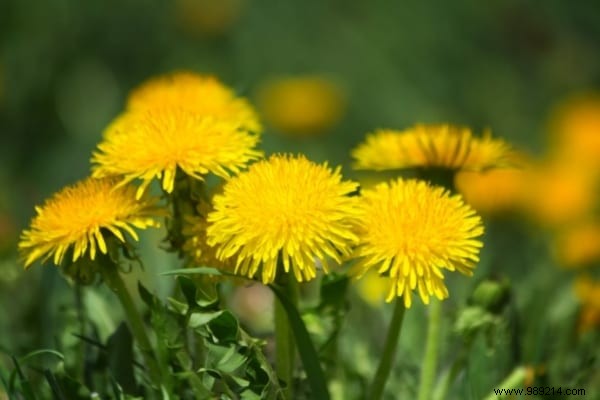
The dandelion is as famous as it is hated by gardeners.
If this yellow flower takes over your lawn in the spring, you're in for a weedy bed!
Because if you let it bloom, the seeds scatter with the wind and weeds grow.
This flower invades all surfaces and is also very resistant.
But with a few well-placed grandma's recipes, the dandelion eventually disappears quite easily.
1st possible method, that of using Epsom salt.
Not only does it kill the dandelion, it's also great for the rest of the garden.
Manual weeding can also be done using a gouge or weeder knife.
The good old boiling water method is also a good alternative.
Finally, for your information, you should know that dandelions can be eaten!
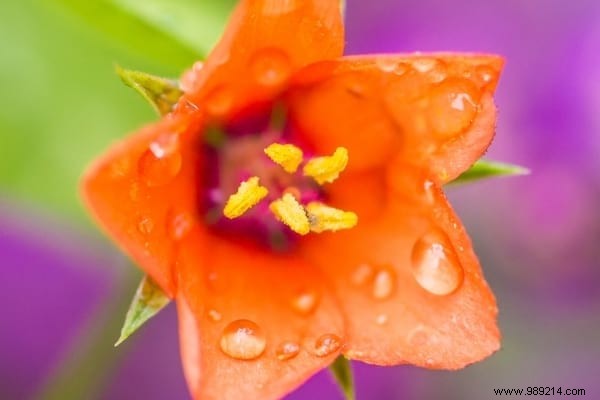
The scarlet pimpernel (or chickweed), is an annual weed (weed) that should not be underestimated.
True, it only grows on the surface.
It is therefore rather easy to uproot (well easy if you do it before it flowers).
Except that its growth is ultra fast and that its seeds spread everywhere in the garden.
You can therefore very easily be invaded by this plant and its creeping roots!
The secret to not being bothered by this perennial is to ANTICIPATE its flowering.
Pull it out by hand or with a hoe before it has time to germinate.
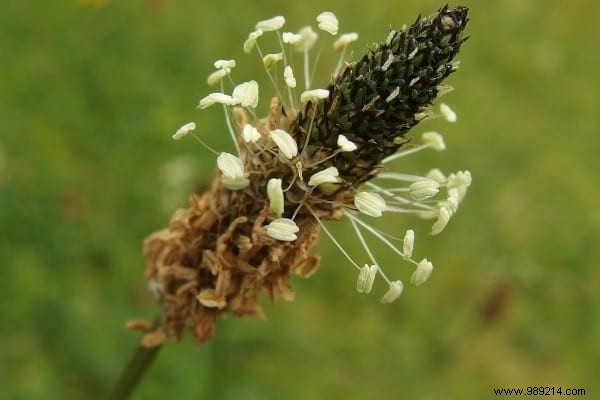
The lanceolate plantain is a rather aesthetic flower.
It's quite nice to have in your garden, but in small doses.
Indeed, this plant has the gift to grow very quickly.
So, don't let them get too comfortable and intervene before they invade your entire space.
To get rid of it, simply pull out its large root with a weeding knife or gouge.

Are you looking for 4-leaf clovers and only find 3-leaf plants?
Bad luck, you are in front of the wood sorrel.
This perennial weed is fairly easy to weed, but has a formidable weapon.
If you don't pull it out the right way and its stem breaks, it releases bulblets!
And if the bulbils scatter everywhere, it's a disaster.
The whole garden can then be invaded by wood sorrels.
To effectively get rid of wood sorrel, do not use a hoe or a spade.
Because as I told you, it is important not to burst the bulbils.
Instead, do manual weeding, taking care to pull out the entire stem.
This way you avoid the risk of regrowth (from May to October).
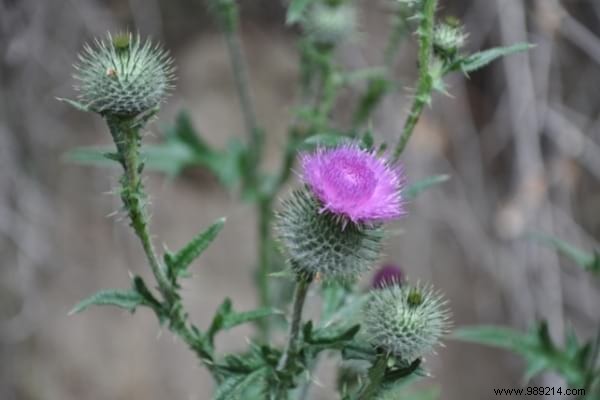
Canada thistle is probably the most characteristic weed.
You know, it's that weed that has ball-shaped prickles on its end.
Not only does it sting, but it is also not easy to weed.
Above all, don't let it grow.
Otherwise its roots sink deep and become suckering.
In other words, it does not need seed to germinate; its roots do the work.
Its proliferation is therefore endless if we do not settle its case very quickly...
1st thing to know, you have to take care of the thistle before it blooms.
Otherwise, it's thousands of seeds that are disseminated by the wind and there, we are in trouble...
To get rid of it, take a gouge or a spade to tear it out and root out all its roots.
Be careful, if you leave even a small piece in the ground, the weed will grow back immediately.
So don't use a big machine like a tiller.
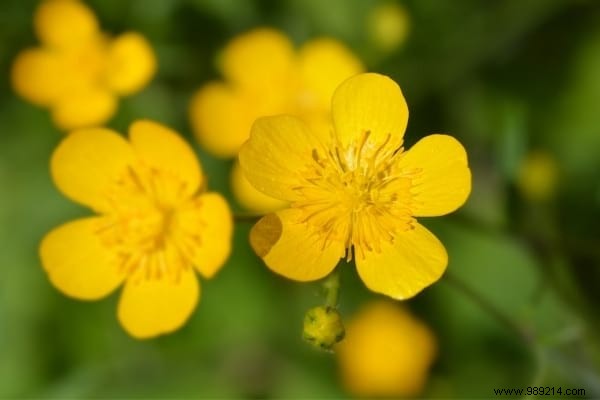
The creeping buttercup hides its game well.
Behind its air of a fragile little buttercup, hides in reality a tough and valiant plant.
If it manages to grow in your garden, hang on to dislodge it!
It breaks out especially when your grass is wet or if your soil is clayey.
And if a gust of wind passes by, expect that its stolons will allow it to be multiplied.
If you don't want to be invaded by the creeping buttercup, take care of it before it blooms.
For this to be effective, you must detach each rosette with its runners.
A spade fork does the trick for this meticulous operation.

Brambles are extremely tough!
It's amazing how easily this weed gets stuck deep in the soil.
Even a few well-placed spade blows won't make it go away so easily.
Here's how to get rid of them quickly.
Spade, spade and more spade.
This is what brambles need to disappear.
In any case, this is what is needed for young shoots.
Because for older roots, it is necessary to bring... a pickaxe!
In both cases, repeat the operation again and again , because the new shoots are sure to come back.
It is at this price that you can get rid of it.

Field bindweed, also known as "devil's gut", is one of the most complicated weeds to eliminate.
It is sure that with such a nickname, you can imagine that we are not dealing with a very friendly plant.
However, its pretty little pinkish white flowers could make you believe otherwise.
Don't be fooled!
On the one hand, the bindweed wraps around your poor flowers which can suffocate them.
But in addition, it allows itself to plant its roots around them to take food and water from them.
You have to quickly pull out this damn plant, because its roots can reach up to 2 m under the ground!
Much like brambles, it takes perseverance to overcome field bindweed.
Systematically cut the stems as soon as they appear and pull out all the roots you can.
Apply this method relentlessly to finally get rid of bindweed.
It's a real war of attrition.
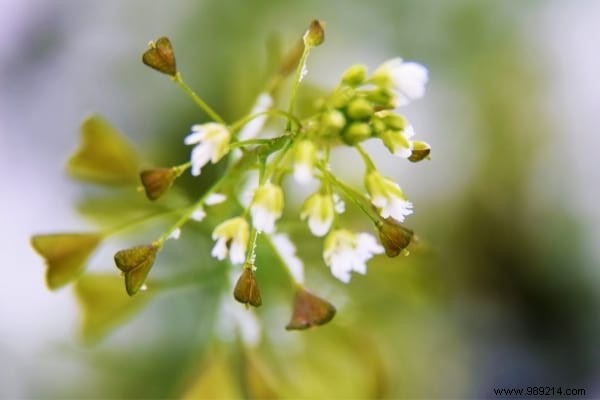
A light, sandy and rather rich soil; this is the ideal place to see the shepherd's purse appear.
This plant, which can reach 40 cm, is very common in most gardens and lawns.
Warning; inside a vegetable garden, be aware that it can spread clubroot.
As with many weeds, this plant should be eliminated as soon as possible.
Because once mature, thousands of seeds spread everywhere several times a year.
To uproot it properly, take a weeder and hoe carefully.
A little information for gourmets.
Know that the shepherd's purse can be eaten!
It tastes a bit like arugula, but less acidic.
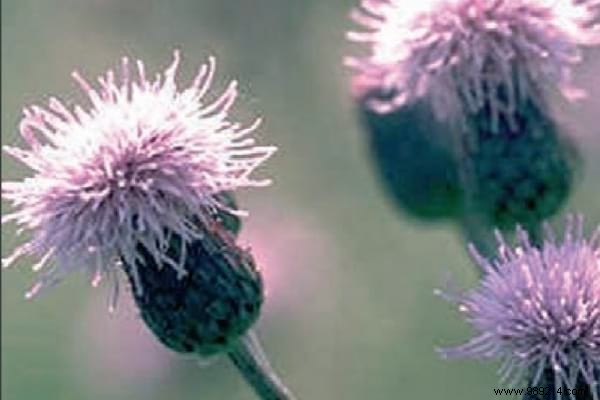
The field cissum is still one of those weeds that hide their game well.
In summer, very beautiful flowers appear above its spiky leaves.
We would like to keep it for its aesthetic side.
But what it doesn't say is that it distills thousands of seeds!
Not only does it invade the garden in no time, but its roots are also suckering.
It should therefore not be allowed to develop and be eliminated before it blooms.
To make the shepherd's purse disappear, either cover the ground or cut off the upper parts.
Do this with a gouge to deplete the roots as much as possible.

The name Galinsoga ciliated certainly doesn't mean much to you.
However, this weed is really not to be taken lightly.
From its eighth week of life, it can immediately germinate nearly 7,500 seeds!
In addition, this weed is often the den of harmful insects, nematodes and viruses.
As usual, it is necessary to intervene as soon as possible and before flowering by doing a good hoeing.
You can also apply the false semi technique.
That is to say, create favorable conditions for the germination of seeds by working the land as for a real seedbed.
The soil is then freed from some of its cumbersome weeds, at least until the vegetable patch germinates.
14. Field mustard
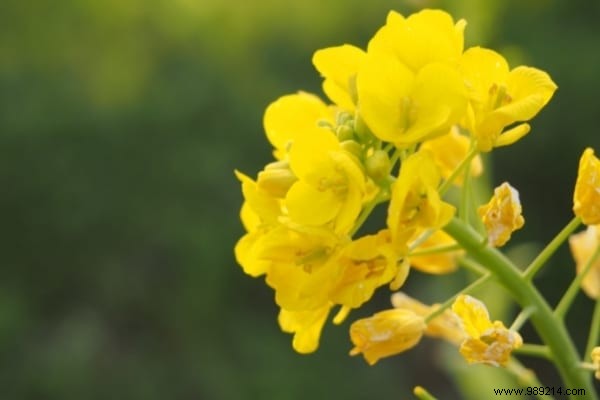
Field mustard is particularly present on calcareous, rich and clay soils.
It flowers every year reproducing by seed from June to October.
Field mustard mainly harbors insect pests (flea beetles) and can spread cabbage disease.
Uprooting the stems at the very beginning of flowering and good weeding is one way to get rid of them.
This prevents future seeds from germinating.
Note that the remains of cut roots do not regenerate.

White clover is a perennial plant very common in our lawns.
You know, it's this white flower that is widely foraged, because it is very rich in nectar.
This weed spreads quickly thanks to its creeping stems and the dissemination of its seeds.
On bare ground, it is necessary to weed well to remove the whole plant.
On a lawn, mow closely to give seeds a minimum chance of germinating.

There you go, you now know how to identify and eliminate the worst weeds in your vegetable patch, garden or lawn :-)
These pictures and photos of weeds are perfect for not being mistaken when pulling out a plant!
But the work does not stop there; plenty of other invasive weeds can give you a hard time.
If so, know that you can use 100% natural products to get rid of it.
Did you know, for example, that white vinegar or baking soda are powerful weedkillers?
And then, if you have weeds in the gravel or between the slabs of the terrace, no problem.
There is a solution to everything.
So there's no need to buy chemicals that are bad for the planet and for your health.